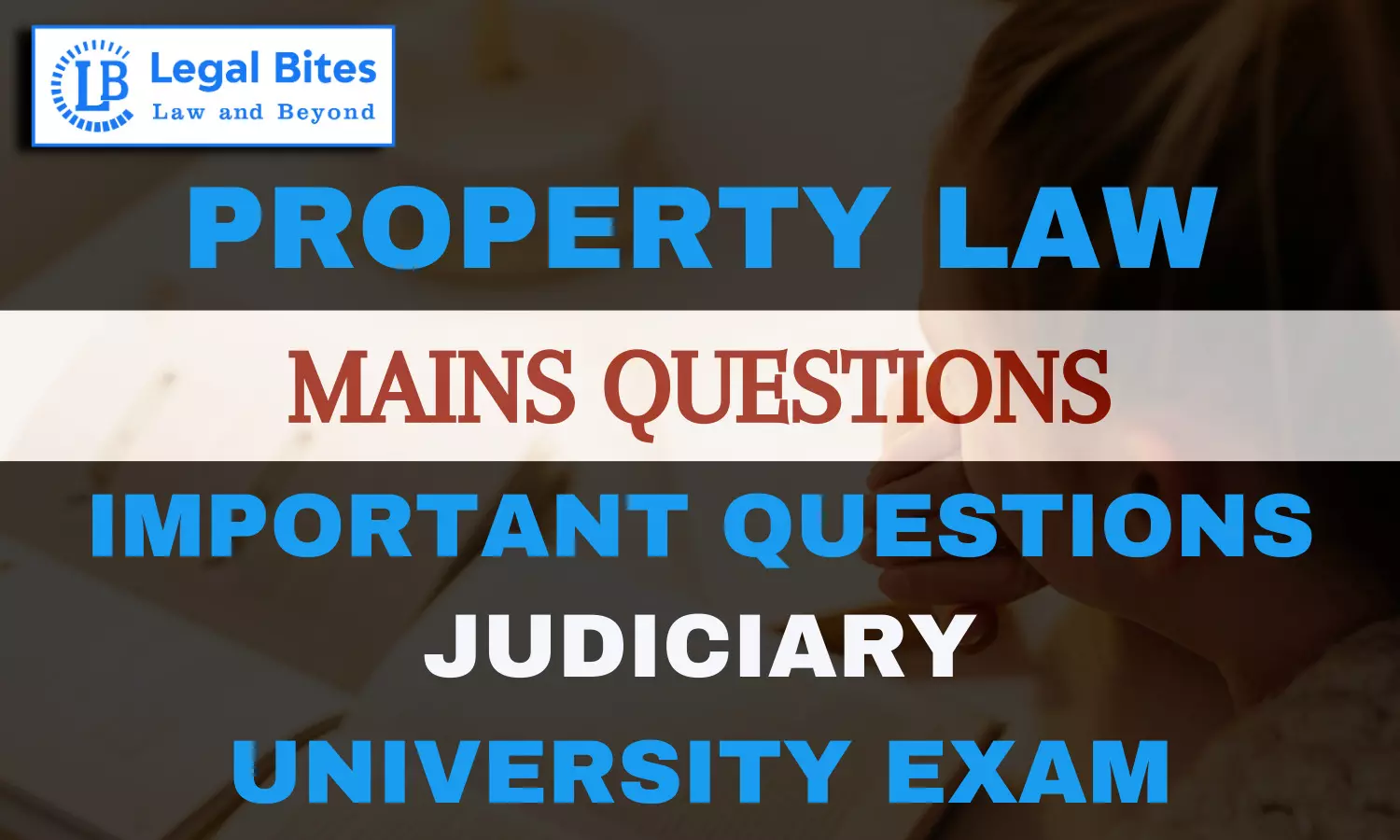Fully explain the rule against perpetuity. Give suitable illustrations, and also the exceptions, if any, to the rule.
Find the answer to the mains question of Property Law only on Legal Bites.

Question: Fully explain the rule against perpetuity. Give suitable illustrations, and also the exceptions, if any, to the rule.Find the answer to the mains question of Property Law only on Legal Bites. [Fully explain the rule against perpetuity. Give suitable illustrations, and also the exceptions, if any, to the rule.]AnswerAs a general rule of transfer of property, one must enjoy the property absolutely during his lifetime. The objective behind this is to prevent property from being tied...
Question: Fully explain the rule against perpetuity. Give suitable illustrations, and also the exceptions, if any, to the rule.
Find the answer to the mains question of Property Law only on Legal Bites. [Fully explain the rule against perpetuity. Give suitable illustrations, and also the exceptions, if any, to the rule.]
Answer
As a general rule of transfer of property, one must enjoy the property absolutely during his lifetime. The objective behind this is to prevent property from being tied up forever in abeyance. Perpetuity is an interest, which will not vest till a remote period. One cannot postpone the vesting of the property in the transferee beyond a certain limit. The period for which vesting may be lawfully postponed is called the perpetuity period.
Section 14 lays down the Rule against perpetuity which states:
“No transfer of property can operate to create an interest which is to take effect after the lifetime of one or more persons living at the date of such transfer, and the minority of some person who shall be in existence at the expiration of that period, and to whom, if he attains full age, the interest created is to belong.”
Illustrations:-
1) If an estate is given to a living person, A for life, then to a living person, B for life and then to the Unborn son of B. Here the son of B must be in existence on or before the date of expiry of the life estate in favour of B.
2) The vesting of absolute interest in favour of an Unborn person may be postponed until he attains full age. for example, an estate may be transferred to A, a living person, and after his death to his unborn son when he attains the age of 18. Such a transfer would not be violative of the rule against perpetuity.
Exceptions to Rule Against Perpetuity
There are certain exceptions to the rule against perpetuity. These include:
a. Charitable trusts: The rule against perpetuity does not apply to charitable trusts. Charitable trusts are trusts that are created for charitable purposes, such as the relief of poverty, the advancement of education, or the promotion of religion.
b. Transfer for the benefit of unborn persons: The rule against perpetuity does not apply to transfers made for the benefit of unborn persons. For example, if a person transfers property to a trust for the benefit of his or her unborn grandchildren, the rule against perpetuity will not apply.
c. Transfers in the exercise of a power of appointment: The rule against perpetuity does not apply to transfers made in the exercise of a power of appointment. A power of appointment is a power given to a person to appoint property to certain beneficiaries.
d. Leases: The rule against perpetuity does not apply to leases of property for a term not exceeding twenty years. In the case of Raja Mohammad Amir Ahmad Khan v. Municipal Board of Sitapur, AIR 1965 SC 1923, the Court held that a lease for a term of more than twenty years was void under the rule against perpetuity. The lease was for a term of ninety-nine years, and the court held that the lease violated the rule because it extended beyond the prescribed period.
e. Options to purchase property: The rule against perpetuity does not apply to options to purchase property, provided the option is exercised within the prescribed period.

Mayank Shekhar
Mayank is an alumnus of the prestigious Faculty of Law, Delhi University. Under his leadership, Legal Bites has been researching and developing resources through blogging, educational resources, competitions, and seminars.
